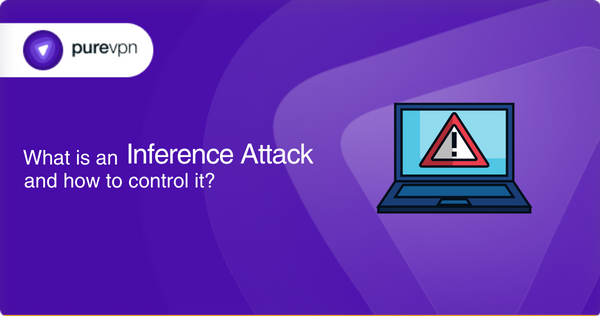Table of Contents
Living in this information world, we get to know about everything in a few clicks. But we usually fail, when it comes to cybersecurity. With an increase in cybercrimes, technologies are taking our breath away.
They expose us to data breaches and risks leading to irreversible damage. Our private information is no longer private. We tend to share our personal information with many third-party services.
These services include banks, hospitals, shopping malls, online platforms, and many more. Although information from thousands of people is private by the law issued by the governing bodies, such information exploits through inference attacks.
So, what is an inference attack? Read more to know about the potential risks you might face and how to prevent them.

What is an Inference Attack?
When a user can get confidential information, without directly accessing it, that is an inference attack. This information is sensitive and is above the reach of common users. This kind of data mining takes place to have information about trade secrets, without access to files. The inference attack helps the hacker to get some information that is usually predicted, leaked, or analyzed but is authentic.
Database security
People today know how important it is to maintain a healthy database. The database acts as the backbone of your system and needs security measures. Here’s how you can keep a check on your database:
- Availability: This means that your database must provide you with information. All hardware and software supporting it must be up to date.
- Integrity: A system must be robust to cater to unauthorized access. It must prevent unsanctioned alterations.
- Confidentiality: There must be barriers to unauthorized data disclosure.
With this, more layers help to elevate database security. Manual privacy control, encryption authentication, network accessibility, auditing, and backups must be checked and controlled all the time. Even after a rigid data security plan, there is a chance for intrusion from social engineering and inference channels.
Inference control
Although inference can not be fully prevented, there are some ways to control and manage the issue. These methods are performed by professionals and are divided into three sub-disciplines.
- Microdata protection: The goal of this technique is to create microdata tables, which are different from the original tables. This makes differential information and confidential information remain hidden. Companies hire professionals to mask the original data or create synthetic unauthentic data in this technique.
- Tabular data protection: This technique is used by the government and other agencies to hide information. They use or present data with average values and median ranges.
- Queryable data protection: The approach in this technique is to hide the numeric data and replace it with qualitative data based on queries generated by asking a question that is open-ended and needs the effort to resolve.
All these techniques must be chosen secretly for better security against inference, only the team designed for the purpose must know the exact database techniques to combat inference. A proactive approach can also be exercised, which means designing a framework of privacy at the inception of data collection to prevent future problems.
Rising Inference problem
With a rise in technology and specialization, many prevention techniques help to control inference but, this has also left us with loopholes that can get us in trouble too. Companies handle and manage their database.
But, sometimes due to large data packs, some companies outsource the data to security agencies. This usually raises eyebrows about the integrity and safety of data. Encryption techniques can be used to counter the problem, but that will still leave certain flaws.
Consequently, XML (extensible markup language) is now used for encoding the data. Although the technology was introduced for better database security, many cases of its inference attacks and indirect access to XML structures have been reported in recent days.
With the development of the semantic web, data is automatically structured in a way to welcome inference and no manual intruders are needed for that. So, when dealing with inference control one needs to understand that machine-related attacks can not diminish completely, but only be managed.
Can a VPN help prevent Inference attacks?
A VPN is a tool that is designed to encrypt your data safely. A reliable VPN can provide you with enhanced security against data breaches and can be used as an added tool to prevent inference attacks.
PureVPN with AES-256-bit encryption initiates a secure connection and ensures your data is transmitted securely. Although a VPN will not help once the inference attack has happened as inference is not completely controlled and the only way to combat is to add security for the database.
Conclusion
In recent years, its database has become vulnerable to breaches. This is because technology has not only benefited us but also left some options for the ones who enjoy cyber thefts. Inference attacks are usually ignored because when discussing security, the main focus is always the physical control and hindering of direct access. We ignore indirect access threats to our database. So, be wary of rising mechanics and minds that affect our privacy indirectly.
Frequently asked questions
What is Inference in cybersecurity?
The inference is the data mining technique that is used to infer sensitive information through indirect access.
What is the Inference problem?
The inference problem occurs when sensitive information is disclosed from the database.
What is an attribute Inference attack?
In an attribute inference attack, the hacker has some data about training outcomes and results of individuals and based on that they can manipulate sensitive data.



